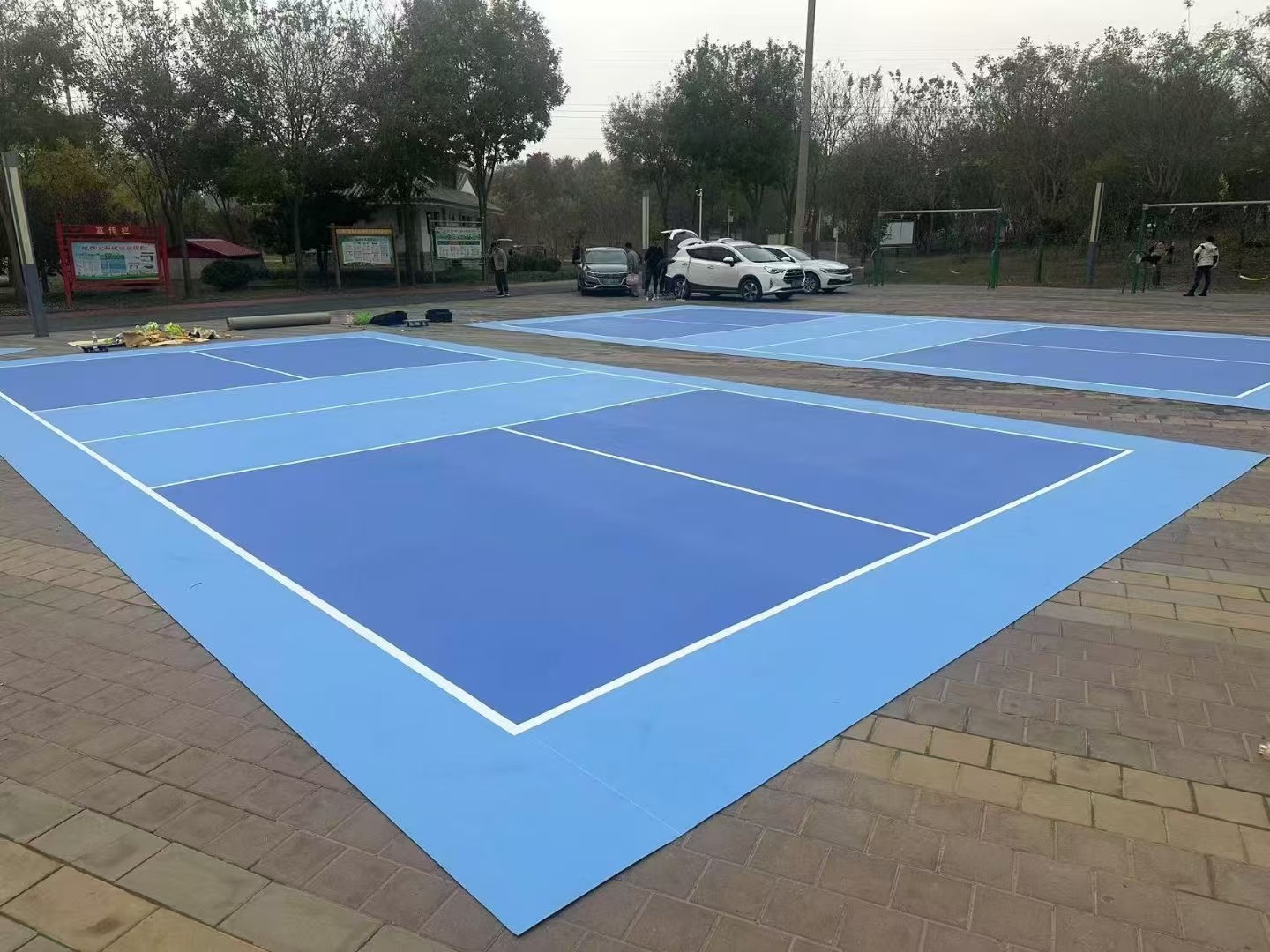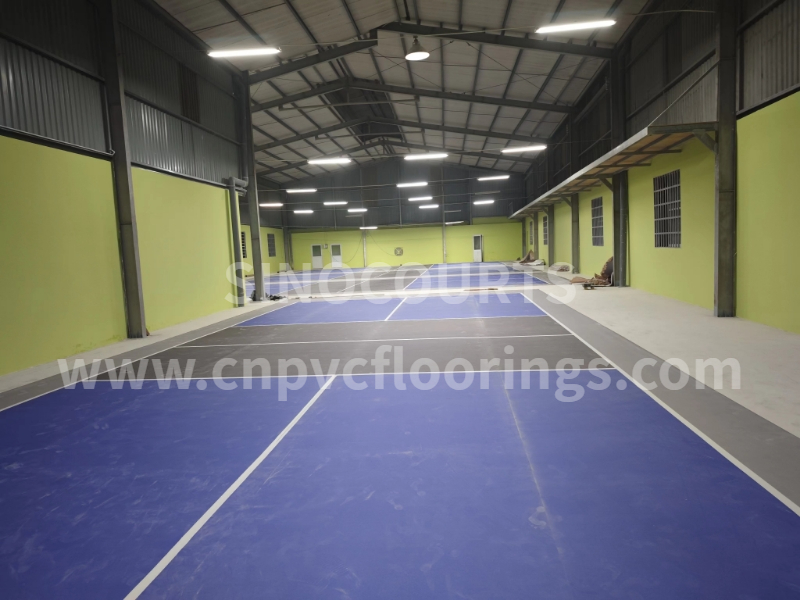With the increasing popularity of pickleball, dedicated pickleball floors have gradually become an important part of sports stadium construction. Compared with other types of sports floors, pickleball floors have unique design and performance characteristics, especially in the choice of thickness and stabilization layer.

1. Different thickness
The common thickness of pickleball flooring is 3.0 mm, which is designed according to the characteristics of pickleball. Pickleball, as a sport that combines elements of tennis, badminton, and table tennis, is flexible and fast, so the flooring needs to have good elasticity and comfort. The thickness of 3.0mm can effectively provide moderate resilience, while also providing sufficient support when players move quickly and stop suddenly.
In contrast, other types of sports floors (such as basketball courts, badminton courts, or multi-purpose gymnasium floors) usually range in thickness from 3mm to 12 mm. Thicker floors usually provide more cushioning and are suitable for sports that withstand greater impact, such as basketball and volleyball. These sports require higher rebound and support from the ground, so thicker floor materials are used.
2. Different stabilization layers
Another key difference lies in the design of the floor's stabilization layer. Pickleball floors usually use a dense type stabilization layer, which makes the floor surface more solid and flat, and can also effectively reduce friction and wear during exercise. The dense type stabilization layer can provide better compression resistance and durability without sacrificing comfort, and is particularly suitable for sports such as pickleball that require high-frequency running and quick reactions.
Most ordinary sports floors use a foam type stabilization layer, which has a good shock absorption effect and is suitable for sports that require greater cushioning. The foam type floor layer performs well in protecting athletes' knees and joints, and is particularly suitable for long-term and high-intensity sports venues such as basketball courts and badminton courts. Although the foam layer can reduce impact, in sports such as pickleball, too much elasticity may affect the ball speed and the athlete's precise control, so it is not suitable for pickleball.
3. Other features
In addition to the differences in thickness and stabilization layer, pickleball floors are usually specially designed for wear resistance, skid resistance, and moisture resistance to ensure a long service life in frequently used environments. In addition, the color and surface treatment of pickleball floors are also customized according to the needs of different venues to adapt to different visual effects and safety standards.
In short, there are obvious differences in thickness and stabilization layer design between pickleball floors and other types of sports floors. The former focuses more on quick response and firmness, while the latter focuses on cushioning and comfort. Choosing the right type of floor is crucial to improving the pickleball sports experience. Venue managers should make reasonable choices based on the characteristics of the sport and usage requirements.
Use SINOCOURTS Pickleball Floor to change your sports experience!
